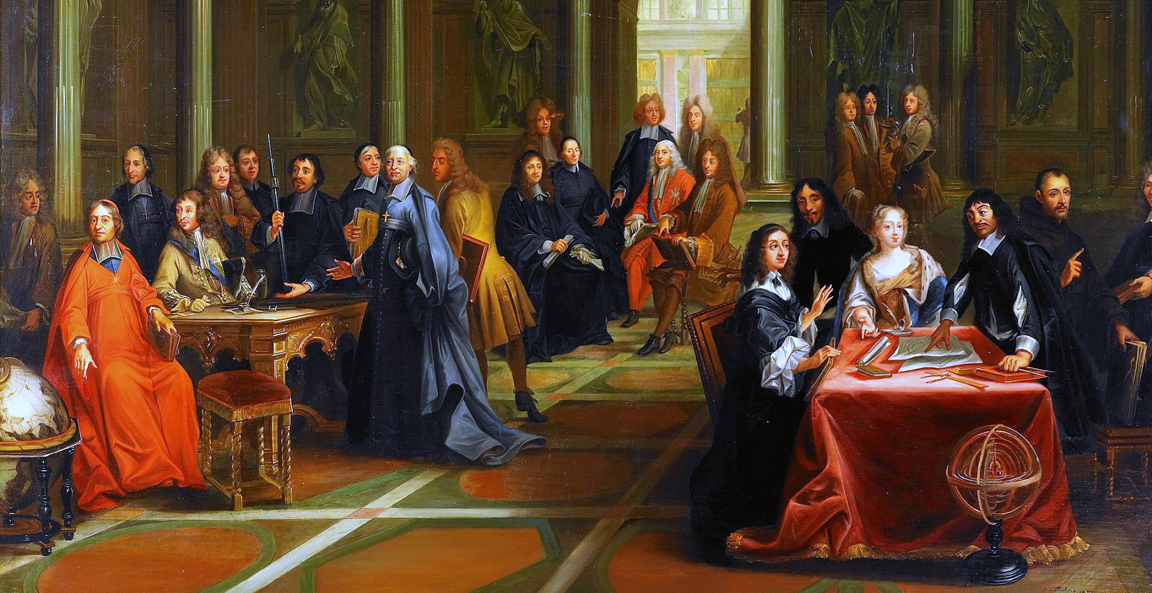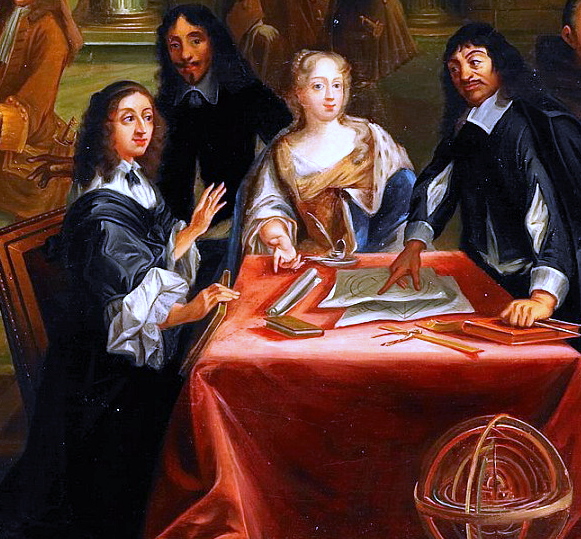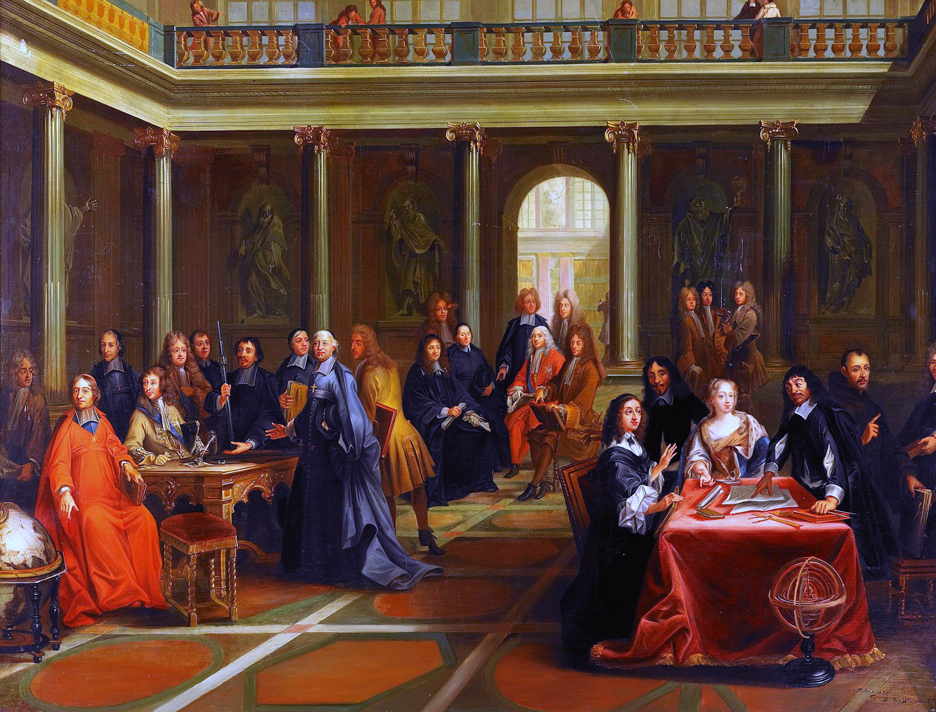Did you know..?
'Cogito ergo sum' latin for 'I think, therefore I am' ..coined by the father of Modern Philosophy, royal tutor in Stockholm, Sweden.
-

-
-
You probably knew that Queen Christina (or Drottning Kristina in Swedish), born in 1626, was an intellectual whose interest in books, manuscripts, religion, alchemy, philosophy and science was vast. But did you know that the queen was so keen on knowledge that she invited the “Father of Modern Philosophy” René Descartes (1596-1650) to come to Stockholm and tutor her?
-
 “Dispute of Queen Christina and René Descartes,” painting by Pierre-Louis Dumesnil, the Younger. The Queen to the left, Descartes to the right.
“Dispute of Queen Christina and René Descartes,” painting by Pierre-Louis Dumesnil, the Younger. The Queen to the left, Descartes to the right. -
-
Born in La Haye en Touraine (nowadays called Descartes), in France, Descartes was introduced to mathematics and physics (including the works of Galileo), early in life. When engaged in the army, Descartes used his spare time to study mathematics, and thus became acquainted with Dutch philosopher and scientist Isaac Beeckman. Beeckman proposed a difficult mathematical problem and was astonished when young Descartes found the solution. Descartes is often regarded as the first thinker to emphasize the use of reason to develop the natural sciences. His philosophy was a way of thinking expressed like this: “All Philosophy is like a tree, of which Metaphysics is the root, Physics the trunk, and the other sciences the branches that grow out of this trunk, which are reduced to three principal, namely Medicine, Mechanics, and Ethics. By the science of Morals, I understand the highest and most perfect which, presupposing an entire knowledge of the other sciences, is the last degree of wisdom.” Descartes was the first major figure in the philosophical movement known as rationalism.
-
 “Dispute of Queen Christina and René Descartes” by Pierre-Louis Dumesnil, the Younger (1698–1781).
“Dispute of Queen Christina and René Descartes” by Pierre-Louis Dumesnil, the Younger (1698–1781). -
In 1646, the 19-year old Swedish queen Kristina found out that her good friend ambassador Pierre Chanut, corresponded with Descartes, asking him, among other things, to send him a copy of Descartes’ book “Meditations”. Kristina, ever curious and hungry for knowledge, began her own correspondence with the philosopher, a correspondence that focused on the issue of hate and love. Eventually she invited Descartes to come to Sweden.
The 53-year old René Descartes arrived in Stockholm on October 1649, and resided with Chanut. However he had to wait until December 18 before starting private lessons with the young queen, lessons that gave her an insight into Catholicism, the religion to which she later on converted. Kristina’s schedule was rigid, and their private lessons in philosophy and religion were scheduled for 5 in the morning in the freezing castle library. Perhaps that was too much for the aging Frenchman, who was used to sleeping in.
On February 1650, Descartes fell ill with pneumonia, and he died ten days later. As a Roman Catholic in the Protestant Sweden, Descartes was interred in a graveyard mainly used for unbaptized infants in Adolf Fredrik’s church in Stockholm. Later, his remains were taken to France and buried in the Abbey of Saint-Germain-des-Prés in Paris. However, his memorial, erected in the 18th century, remains in the Swedish church. -
Kristina, who admitted in her autobiography that she felt "an insurmountable distaste for marriage" and, "an insurmountable distaste for all the things that females talked about and did", abdicated her throne on June 5th in 1654 (in favor of her cousin Karl X Gustav) and she converted to Catholicism in the fall of 1655. She died in her home (Palazzo Riario) in Rome, in the early morning of April 9, 1689, 62 years old. She is buried in St. Peter’s Basilica in Rome.
-
-
-
